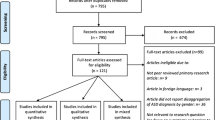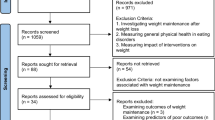Abstract
Objective
To analyse the clinical profile of eating disorders (ED) among adolescent patients living in India.
Methods
This is a descriptive study of a series of seven adolescent patients presenting to a tertiary care centre with characteristic clinical features of eating disorder.
Results
Of the seven adolescents with ED there were 3 boys and 4 girls. Physical examination, psychiatric assessment and investigations confirmed the diagnosis of ED in all seven. Five adolescents were managed with nutritional rehabilitation and family based therapy as inpatients for about 3 wk. One was treated in the outpatient clinic and one was unwilling for treatment. Four patients who had strong family support recovered, 1 had minimal weight gain and 2 were lost to follow up.
Conclusions
The characteristic form of adolescent onset ED exists among adolescents living in India. A multidisciplinary approach to treatment is essential for a good outcome. This article was written to sensitize health care professionals, pediatricians in particular about the existence of ED among adolescents living in India and the current acceptable principles of management of this potentially fatal illness.
Similar content being viewed by others
References
American Psychiatric Association. Diagnostic and Statistical Manual of Mental Disorders. 4th ed. Text revision. 2000. doi: 10.1176/appi.books.9780890423349.
Pawluck DE, Gorey KM. Secular trends in the incidence of anorexia nervosa: integrative review of population-based studies. Int J Eat Disord. 1998;23:347–52.
Shisslak CM, Crago M, Estes LS. The spectrum of eating disturbances. Int J Eat Disord. 1995;18:209–19.
Schoemaker C. Does early intervention improve the prognosis in anorexia nervosa? Int J Eat Disords. 1997;21:1–15.
Deter H, Herzog W. Anorexia nervosa in a long-term perspective: results of the Hedelberg-Mannheim study. Psychosom Med. 1994;56:20–7.
Fairburn C, Harrison PJ, Brownell K. Eating disorders. Lancet. 2003;361:407–16.
Barry A, Lippman SB. Anorexia nervosa in males. Postgrad Med. 1990;87:161–5,168.
Morandé G, Celada J, Casas JJ. Prevalence of eating disorders in a spanish school population. J Adolesc Health. 1999;24:212–9.
Kjelsås E, Bjørnstrøm C, Götestam KG. Prevalence of eating disorders in female and male adolescents (14–15 y). Eat Behav. 2004;5:13–25.
Mendhekar DN, Arora K, Lohia D, Aggarwal A, Jiloha RC. Anorexia nervosa: an Indian perspective. Nat Med J India. 2009;22:181–2.
Yager J, Smith M. Restricter anorexia nervosa in a 13-year-old sheltered Muslim girl in Lahore, Pakistan: developmental similarities to westernized patients. Int J Eat Disord. 1993;14:383–6.
WHO child growth standards and the identification of severe acute malnutrition in infants and children. A Joint Statement by the World Health Organization and the United Nations Children’s Fund. Authors: World Health Organization, United Nations Children’s Fund. http://www.who.int/childgrowth/standards/technical_report/en/index.html
Lee HY, Lee EL, Pathy P, Chan YH. Anorexia nervosa in Singapore: an 8-year retrospective study. Singapore Med J. 2005;46:275–81.
Khandelwal SK, Sharan P, Saxena S. Eating disorders: an Indian perspective. Int J Soc Psychiatry. 1995;41:132–46.
Nicholls D.Aetiology. In: Lask B, Bryant-Waugh R, eds. Eating disorders in childhood and adolescence. 3rd ed. Hove and New York: Routledge and Taylor and Francis; 2007. pp. 51–74.
McGivering J, Anorexia takes hold in India. BBC News. London, UK. BBC Asia Analyst. Jun 17, 2003. http://news.bbc.co.uk/go/pr/fr/-/2/hi/south_asia/2978216.stm
Legenbauer T, Rühl I, Vocks S. Influence of appearance-related TV commercials on body image state. Behav Modif. 2008;32:352–71.
Solomon SM, Kirby DF. The refeeding syndrome: a review. J Parenter Enteral Nutr. 1990;14:90–7.
Russell GFM, Szmukler G, Dare C, Eisler I. An evaluation of family therapy in anorexia nervosa and bulimia nervosa. Arch Gen Psychiatry. 1987;44:1047–56.
Eisler I, Dare C, Russell GFM, Szmukler G, le Grange D, Dodge E. Family and individual therapy in anorexia nervosa: a 5-year follow-up. Arch Gen Psychiatry. 1997;54:1025–30.
Conflict of Interest
None.
Role of Funding Source
None.
Author information
Authors and Affiliations
Corresponding author
Rights and permissions
About this article
Cite this article
Basker, M.M., Mathai, S., Korula, S. et al. Eating Disorders among Adolescents in a Tertiary Care Centre in India. Indian J Pediatr 80, 211–214 (2013). https://doi.org/10.1007/s12098-012-0819-4
Received:
Accepted:
Published:
Issue Date:
DOI: https://doi.org/10.1007/s12098-012-0819-4




